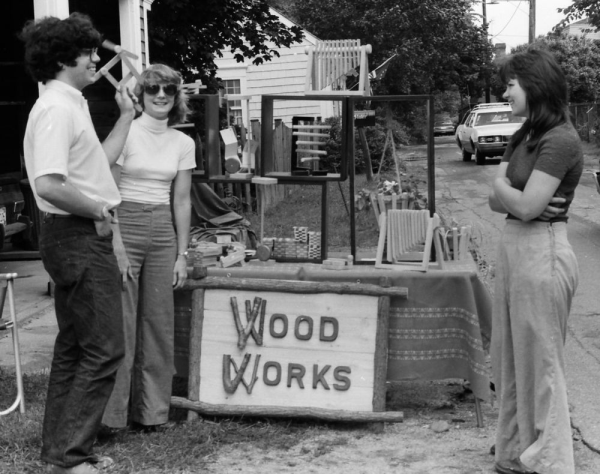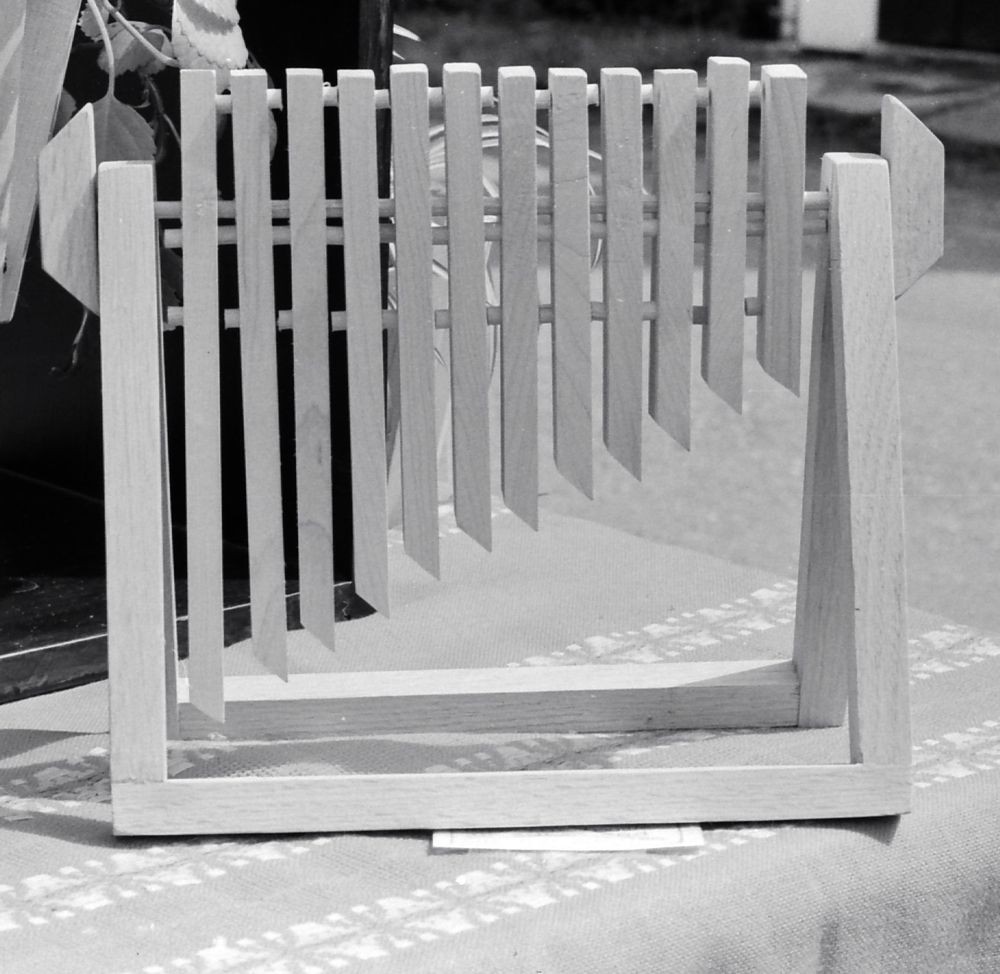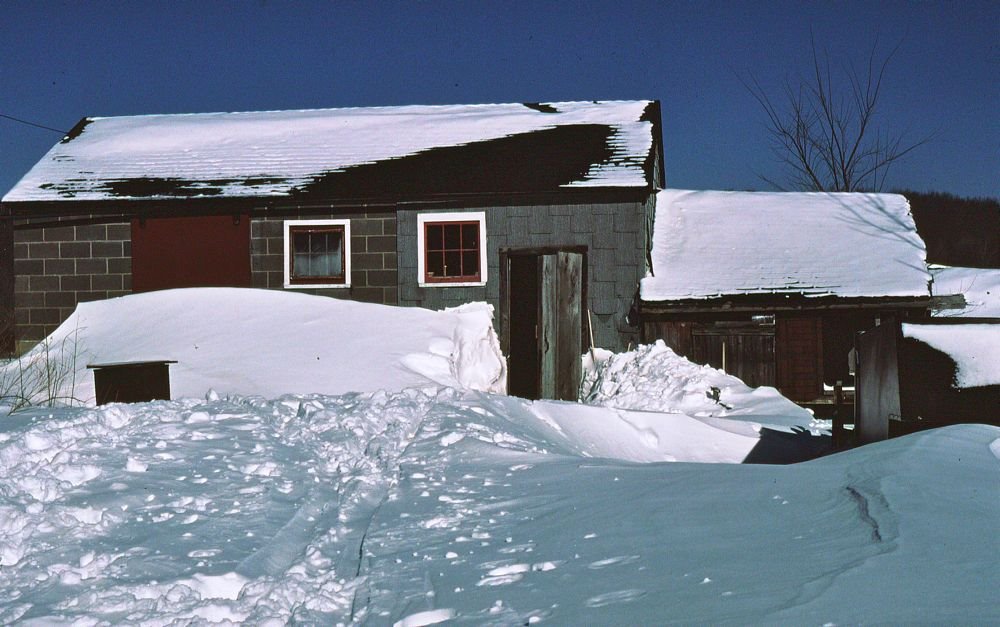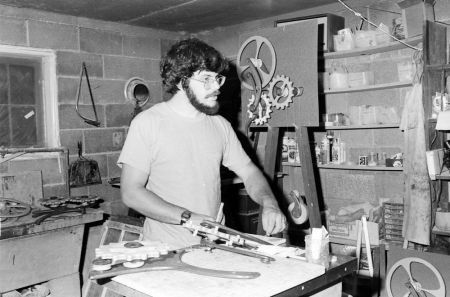This is the second of a series of blogs about my history in the craft industry. If you missed the first post start here.
The craft community of the '70's was an amiable, chatty group and although the early craft fairs may not have been a huge financial success, we were among friends trying to make an alternative living. We shared experiences and knowledge and a fellow crafter mentioned that we should investigate exhibiting at Rhinebeck. Rhinebeck was a juried show that was quickly becoming the premier craft show in the country, and we had never heard of it (Remember those days with no Internet?). The American Craft Council initially brought the show to the fairgrounds in Rhinebeck, NY in 1973 and it combined both wholesale and retail opportunities for the growing craft industry in America. (For more information and a funky history of Rhinebeck check out the articles here and here).
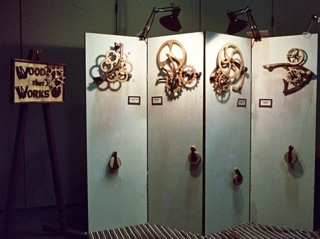
Our early display. It was precariously balanced on scrap wood when we set it up in the tent on lumpy ground at our first ACC Rhinebeck craft show in 1977.
WTW first applied to Rhinebeck for the June 1976 show with the line of executive playthings and was rejected. It was a humbling experience. It also pointed to a problem that we faced until the advent of the internet - how to show motion. Jurying was limited to five static slides. It was very difficult to convey how the pieces moved or operated in a photo. Makers of musical instruments faced similar problems. I've always assumed that we finally made it through the jurying process because one or more of the jurors (mostly fellow craftspeople) had seen my work at one of the small shows and could explain it.
Like many things in life the set back turned out to be a good thing. Over the next year I developed the wall sculpture concept and expanded my woodworking skills. We got the "fat envelope" the next year and Wood That Works as a fledgling business was born.
The new category presented by the wall pieces opened the door to Rhinebeck and the national gallery scene. Luckily Rhinebeck was located in neighboring New York state which made our participation possible. In June I loaded up the second-hand pick-up truck emblazoned with red and yellow flames on the sides and headed west. Marji had to remain home because school wasn't out for the year and she was still earning the bulk of our income teaching high school art. Instead Larry, my roommate from college, was riding shotgun.
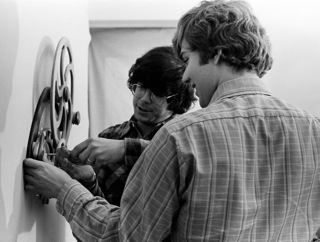
Establishing a business is always easier with a little help from your friends!
In some ways Rhinebeck was similar to other tent shows that we had attended. It took place at an agricultural fair ground which brought its own set of challenges. In warm weather it smelled like a barnyard and in bad weather it was a sea of mud. But in other ways Rhinebeck was a very different affair. On the opening evening there was a wine and cheese gala where the artists exhibited their work and mingled with gallery owners and buyers. This was a "no sales" event allowing gallery owners to see everything that was available prior to the initial day of the show. There was a lot of excitement around the WTW booth. The wall pieces were a new genre in the craft world - it wasn't pottery, weaving or glass and this was exciting for the gallery owners. Many owners said they would be back the next day to place orders.
Larry and I were stunned that first morning to find gallery owners lined up at our tiny 10' x10' grassy booth waiting to place orders. The orders started rolling in. After an hour or so of taking orders, Larry turned to me and asked how many pieces I had in stock and how many I could make. I wasn't sure - this had not been a problem before! Larry, always a creator of charts, set-up my first production schedule on scrap paper so that I didn't over promise myself.
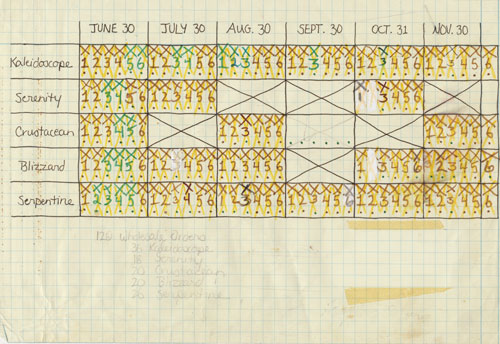
I would have been hopelessly over-committed without his input. That first day we sold to many galleries around the USA including in Texas, California, and Hawaii. Many galleries from that first group showed my work for years but only one is still with us. Gregory's of Salado, Texas has been showing my work since the beginning and still shows it today! (update: Gregory'e closed shop in 2012 to retirement!)
At the end of the day I called Marji and told her that we could go ahead with the planning phase of the new house/studio we had been dreaming of building. In fact we needed to go ahead with it, I was going to need more (and warmer) space to work!
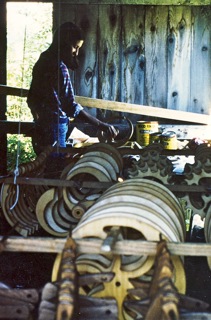
To continue to part 3: Click Here

